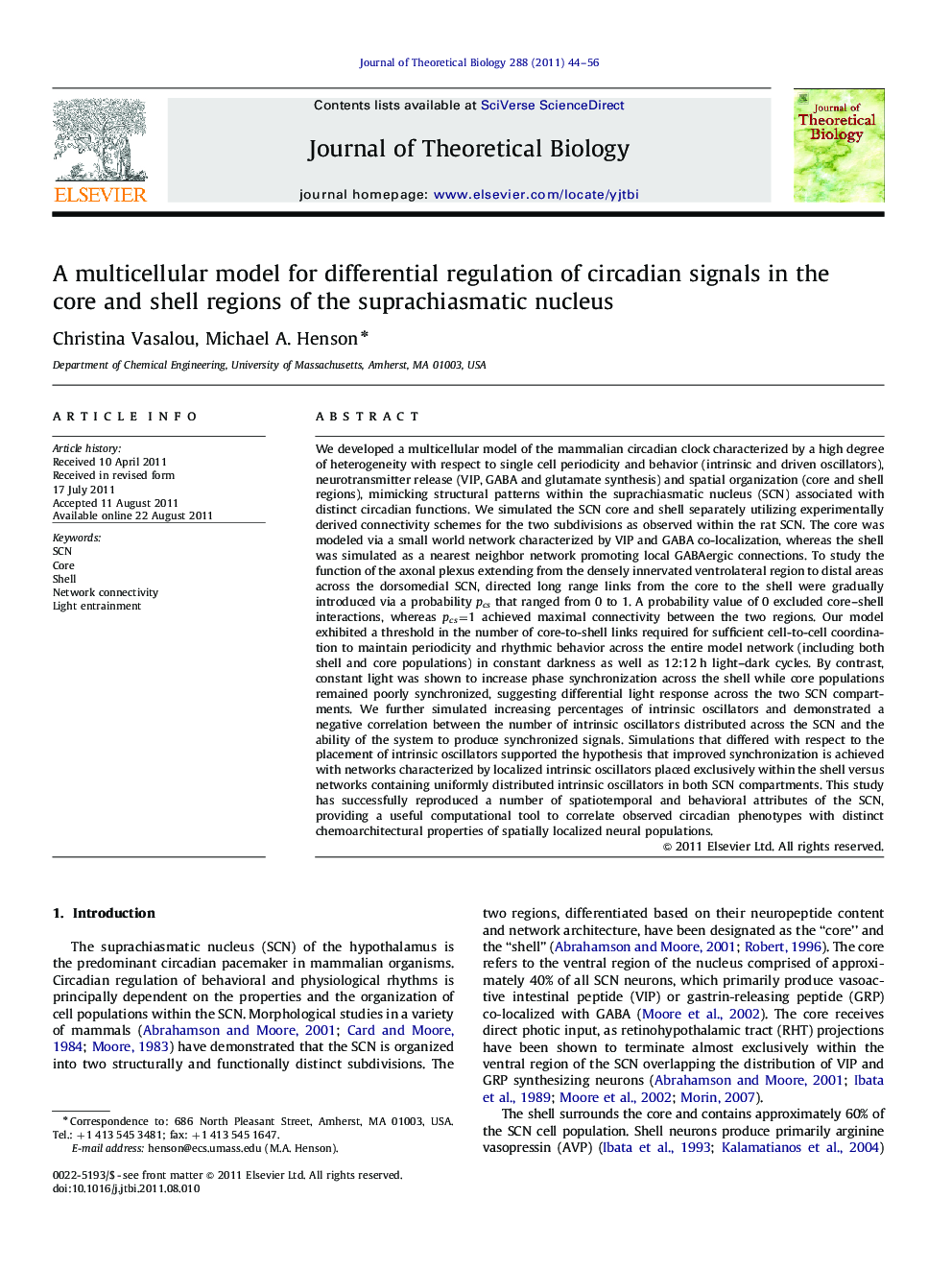| کد مقاله | کد نشریه | سال انتشار | مقاله انگلیسی | نسخه تمام متن |
|---|---|---|---|---|
| 4496882 | 1623922 | 2011 | 13 صفحه PDF | دانلود رایگان |

We developed a multicellular model of the mammalian circadian clock characterized by a high degree of heterogeneity with respect to single cell periodicity and behavior (intrinsic and driven oscillators), neurotransmitter release (VIP, GABA and glutamate synthesis) and spatial organization (core and shell regions), mimicking structural patterns within the suprachiasmatic nucleus (SCN) associated with distinct circadian functions. We simulated the SCN core and shell separately utilizing experimentally derived connectivity schemes for the two subdivisions as observed within the rat SCN. The core was modeled via a small world network characterized by VIP and GABA co-localization, whereas the shell was simulated as a nearest neighbor network promoting local GABAergic connections. To study the function of the axonal plexus extending from the densely innervated ventrolateral region to distal areas across the dorsomedial SCN, directed long range links from the core to the shell were gradually introduced via a probability pcs that ranged from 0 to 1. A probability value of 0 excluded core–shell interactions, whereas pcs=1 achieved maximal connectivity between the two regions. Our model exhibited a threshold in the number of core-to-shell links required for sufficient cell-to-cell coordination to maintain periodicity and rhythmic behavior across the entire model network (including both shell and core populations) in constant darkness as well as 12:12 h light–dark cycles. By contrast, constant light was shown to increase phase synchronization across the shell while core populations remained poorly synchronized, suggesting differential light response across the two SCN compartments. We further simulated increasing percentages of intrinsic oscillators and demonstrated a negative correlation between the number of intrinsic oscillators distributed across the SCN and the ability of the system to produce synchronized signals. Simulations that differed with respect to the placement of intrinsic oscillators supported the hypothesis that improved synchronization is achieved with networks characterized by localized intrinsic oscillators placed exclusively within the shell versus networks containing uniformly distributed intrinsic oscillators in both SCN compartments. This study has successfully reproduced a number of spatiotemporal and behavioral attributes of the SCN, providing a useful computational tool to correlate observed circadian phenotypes with distinct chemoarchitectural properties of spatially localized neural populations.
► We model distinct subdivisions of the circadian network characterized by a high degree of heterogeneity.
► We find a threshold in functional long range connectivity across SCN subdivisions required for robust behavior.
► Connectivity threshold occurs for a range of populations that contain increasing percentages of pacemakers.
► Individual SCN subdivisions are found to respond differently depending on light input and network connectivity.
Journal: Journal of Theoretical Biology - Volume 288, 7 November 2011, Pages 44–56